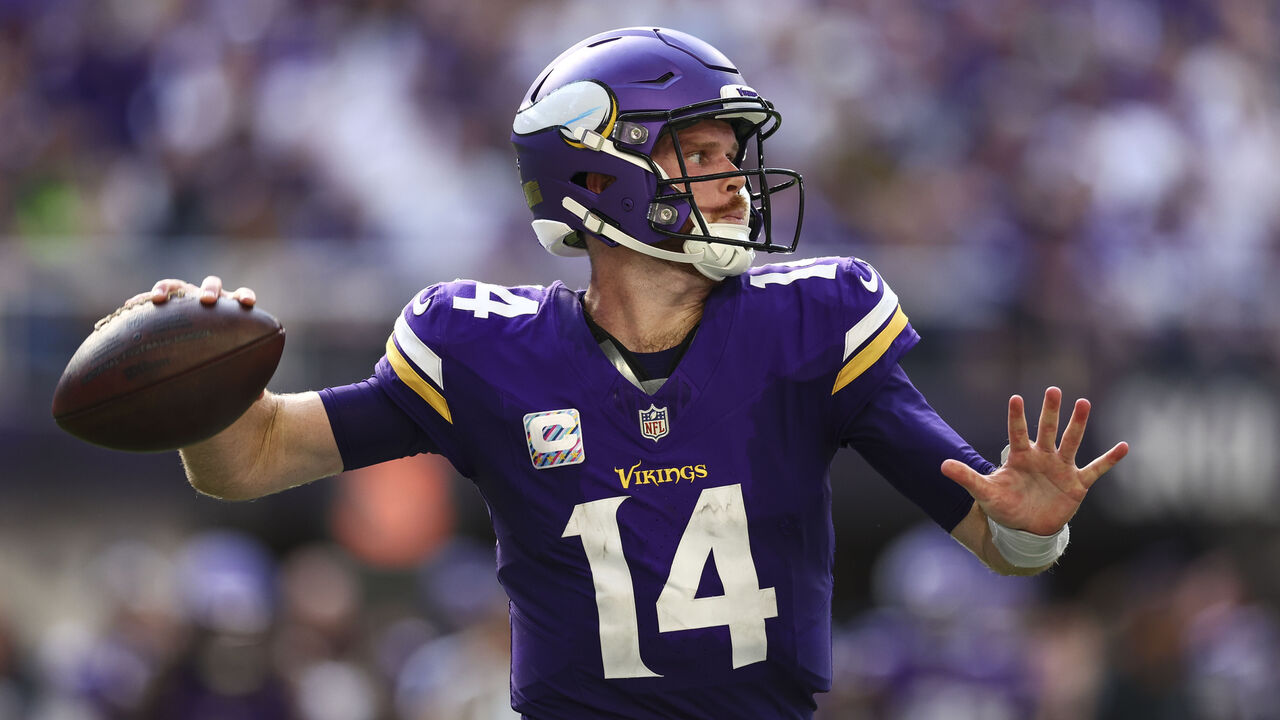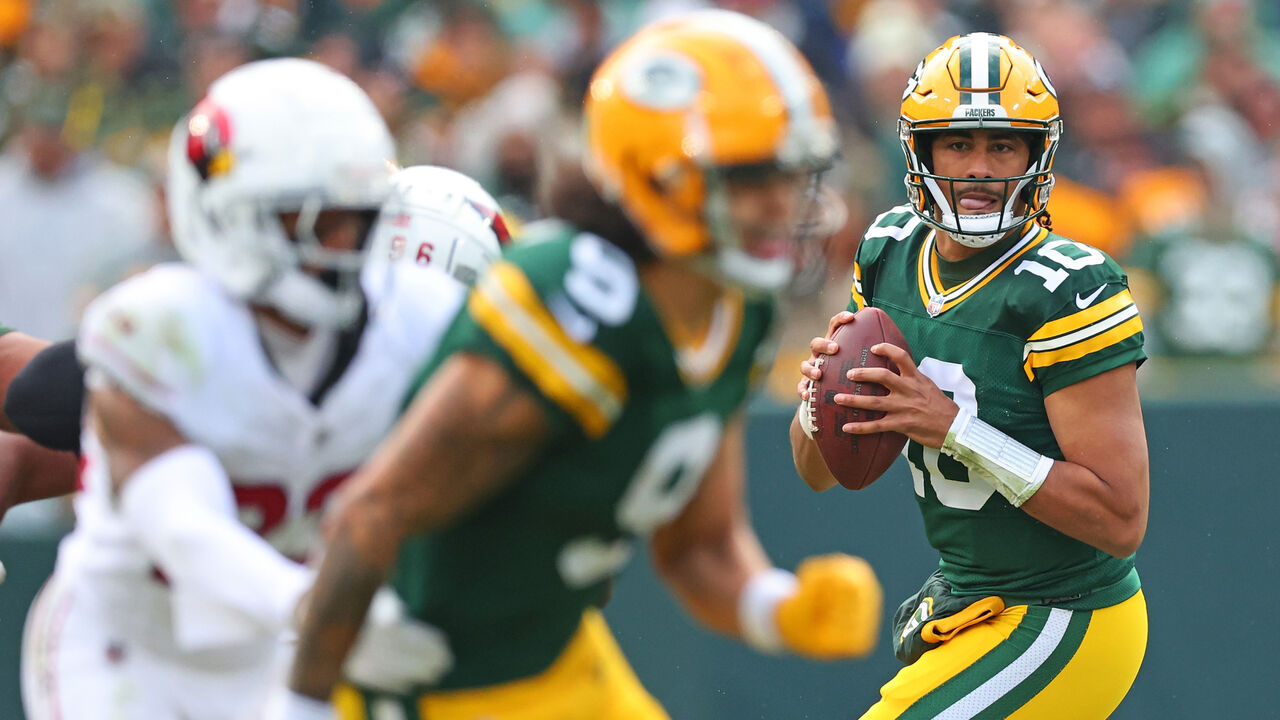How the powerful NFC North can sweep 4 playoff berths
In each year of the NFL's expanded, seven-team postseason format, one stacked division has sent three clubs to the dance.
Some fourth-place finishers almost managed to crash the party. Last season's 9-8 Bengals weathered the loss of Joe Burrow to a serious wrist injury and stayed afloat in the playoff race until New Year's Eve. In 2022, the 8-8-1 Commanders would have forced a convoluted four-way tiebreaker for two wild-card spots had they beaten - rather than tied - the Giants on the road.
This fall, the nexus of competitiveness is the NFC North. Its members field good quarterbacks, steal the ball on defense, and own the conference's second-best through fifth-best point differentials, trailing only Washington.
The 5-1 Lions, 5-2 Vikings, 5-2 Packers, and 4-2 Bears boast a combined 19-7 record. They're 10-3 against other NFC opponents and 7-2 against the AFC. None have glaring weaknesses. Except for Chicago's offense, which wobbled in Caleb Williams' first couple of weeks, each squad ranks in the top 10 in scoring on both sides of the ball.
Teams want their rivals to fail, but last week's frantic finishes strengthened the quartet's collective chance to make history. Late field goals lifted the Packers over the Texans and helped the Lions neutralize a Vikings comeback, signaling they'll all battle for divisional supremacy. The Bears, who coasted into their bye on a three-win hot streak, seem capable of sneaking into the playoffs even if they place last in the North.
It would be an NFL first, and it necessitates smoking competition outside of the division with only so many wins within it available to split. Week 8 is important for this group: After the Vikings fell to the Rams on Thursday night, Sunday's slate features Lions-Titans, Packers-Jaguars, and Bears-Commanders matchups.
All of them can win 10 or more games to maximize the odds they'll sweep the wild-card berths if some key trends improve or persist.
One for the Vikings is late bloomer Sam Darnold's ability to make the big play.

Launching the ball for his fourth franchise, Darnold ranks in the top five among qualified quarterbacks in big-time throws (12), intended air yards per attempt (8.9), air yards per completion (7.8), and completion rate on deep shots that travel at least 20 yards (57.7%), per PFF and Pro Football Reference.
He's shown he can find Justin Jefferson (five receiving scores, 92.3 yards per game) and has helped Minnesota race to leads by outscoring foes 72-10 in first quarters. Darnold needs to go shot for shot with savvy veterans like Jared Goff and Matthew Stafford, who each diced up the Vikings' defensive looks over a five-day span.
The Lions must generate pressure without singular edge rusher Aidan Hutchinson, whose leg fracture in Week 6 derailed his push for Defensive Player of the Year. Hutchinson's 7.5 sacks and eight additional QB hits lessened the strain on a pass defense that sprung leaks throughout Detroit's rise to championship contention.
Three Lions sacks on the fringe of the red zone forced Minnesota to settle for field goals. A fourth thwarted Darnold's last-ditch Hail Mary attempt. Swarming QBs as a committee - defensive end Josh Paschal and three linebackers took down Darnold - could help Brian Branch, the acrobatic Lions safety with four interceptions, snare more overthrown passes or jump balls.

The Packers lead the league with 17 takeaways but could enlarge their plus-six turnover differential with improved ball protection. The key is to let Jordan Love cook (15 touchdown passes in five starts, NFL-high 8.4% TD rate) while reducing his hurtful plays (eight interceptions, 4.5% INT rate).
Channeling Brett Favre, the gunslinging Love's gotten into trouble when he's telegraphed throws, missed his target, or made reckless choices while falling in the end zone. He offset his two picks against Houston with a touchdown dart to tight end Tucker Kraft - which eluded an airborne defender's fingertips - and another to wideout Dontayvion Wicks. Think of the havoc Green Bay's surplus of playmakers could wreak if Love was slightly more precise.
Chicago's priority is to keep Williams clean. The prized rookie was sacked 11 times in two early losses but absorbed just nine across four wins. The Bears gave up 50 sacks in 2023 as they scuffled to a 7-10 record and waited to draft Williams with Carolina's No. 1 pick.
His passer rating when pressured is poor (54.0, per PFF), but Williams is in command when routes have time to develop. He fired three 30-plus-yard touchdowns from a calm pocket in recent weeks, once after pump-faking a lone threatening pass-rusher. His stats sparkled (74.1% completion rate, 7-1 TD-INT split) as Chicago banked wins over the Rams and Panthers at home and topped the Jaguars in London.
Because their six divisional games come between Weeks 11-18, the Bears have the league's toughest remaining schedule, per Tankathon. A rude awakening may await, but not until after Williams faces three more exploitable pass defenses - those of the Commanders, Cardinals, and Patriots.
Getting to 10 wins would almost guarantee a playoff appearance.
Between 2002-19, when 12 of 32 clubs reached the NFL postseason, nine 10-win teams and the 11-win 2008 Patriots failed to qualify, meaning a contender was often shafted.
Since the field expanded, only one of 46 double-digit win teams - the 2020 Dolphins - suffered the same fate, per Stathead. Every 10-7 team, plus eight nine-win squads, grabbed a playoff spot in the first three 17-game years.
The balance in the NFC North is unusual: 2012 was the last time three members enjoyed simultaneous winning seasons. Over 22 years since divisional realignment, the group produced one Super Bowl winner (the 2010 Packers as the No. 6 seed), another Super Bowl finalist (2006 Bears as the No. 1 seed), and the loser of nine NFC title games, with three of those defeats inflicted in overtime.
Months of football remain but, if all four teams hang in the postseason chase, they might do something unprecedented.
Nick Faris is a features writer at theScore.